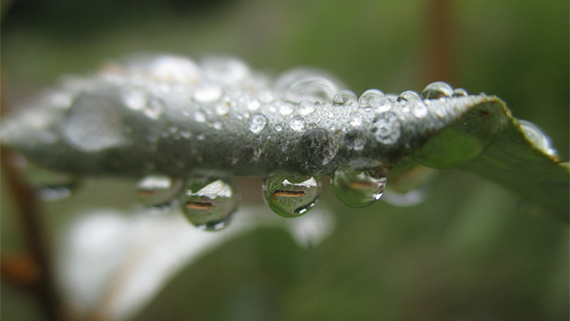Cool and unsettled weather continued in July

The average temperature in July remained below the long-term average. In the eastern and northern parts of the country, July was unusually cool; even exceptionally cool in Kainuu and eastern Lapland. The month saw three hot days.As in June, Finland was mainly under the influence of a low pressure system in July, which is why unsettled and cool weather prevailed for almost the entire month. The monthly average temperature remained below the long-term average in the whole country, varying from just over 15°C in southern parts of the country to less than 11°C in northern Lapland. The eastern and northern parts of the country were unusually cool; a July as cool as this year occurs in the region on average once in a decade. Kainuu and eastern Lapland were even exceptionally cool; a July as cool as this year occurs in the region on average once in 30 years.
Three hot days in July
At the beginning of the month, some very warm air flowed in momentarily from the south to the southern and central parts of the country, raising the temperature above 25°C in these regions. The highest temperature in the month, 31.4°C, was reported in Utti in Kouvola on 3 July. There were three hot days in July, and the entire summer has so far only seen four of them, which is the second lowest figure recorded since 1959. Fewer hot days were experienced only in 1962, when the whole summer only saw three of them. The lowest temperature in the month, -1,7°C , was recorded in Naruska in Salla on 6 July. Southern parts of the country also experienced some cold nights with frost in some areas.Twice the amount of rain in some areas compared to a usual JulyBig differences were seen in the rain levels but on average it rained more than usual. The greatest rainfall measurements were recorded in the Åland Islands, on the west coast and in Kainuu, where rain levels were nearly twice the normal. Rainfall was lowest on the coast of the Bay of Bothnia and in northernmost Lapland, where it was approximately half of the normal amount of rain. Of FMI's observation stations, Pesiö in Suomussalmi received the most rain with a total rainfall of 160.9 millimetres. The least rain, 26.4 millimetres, was recorded in Kevo in Utsjoki. The greatest amount of rain in a 24-hour period, 70.4 millimetres, was recorded in the Nervanderinpuisto park in Uusikaupunki on 7 July. In addition, a few local occurrences of torrential rain were experienced in the course of the month, causing sudden flooding. This happened, for example, in Tampere on 16 July.
Number of lightning strikes record low
A record low number of lightning strikes was tracked in July: altogether just over 10,000 strikes, which is the lowest number in statistics. The previous record was measured in 1968, when 10,500 strikes occurred. The average number of cloud-to-ground lightning strikes in July is approximately 60,000. The highest number of lightning strikes (approx. 2,500 cloud-to-ground strikes) was recorded on 9 July. There have only been four days this year when more than 1,000 lightning strikes were recorded over one day. Although lightning strikes have been few, weaker thunderstorms have been experienced almost across the entire country.
Further information:
Weather statistics from the Climate Service Centre, tel. 0600 1 0601 (€4,01/min + local charges)Weather forecasts from the meteorologist on duty 24 h/day tel. 0600 1 0600 (€4,01/min + local charges)